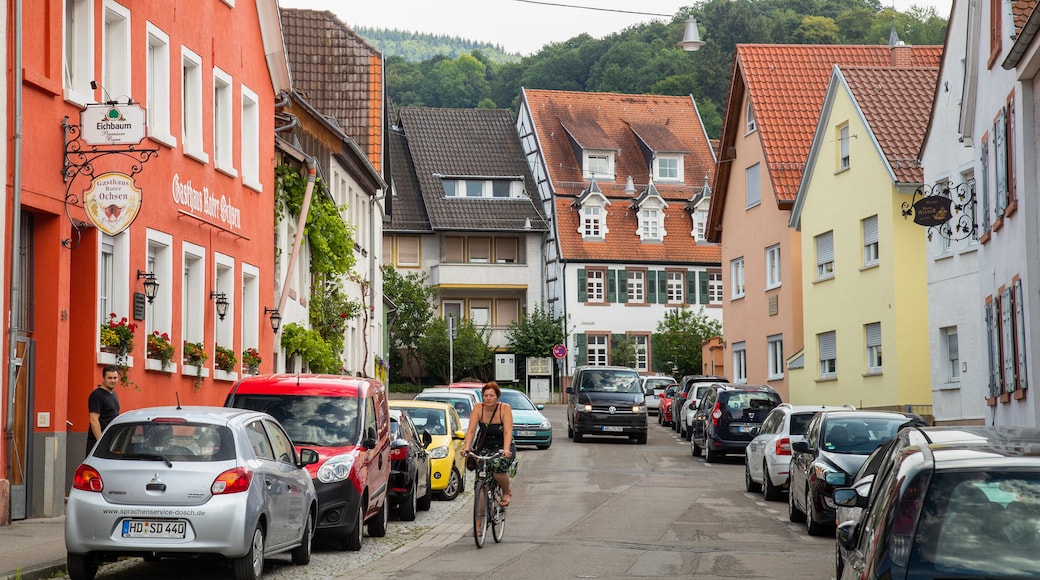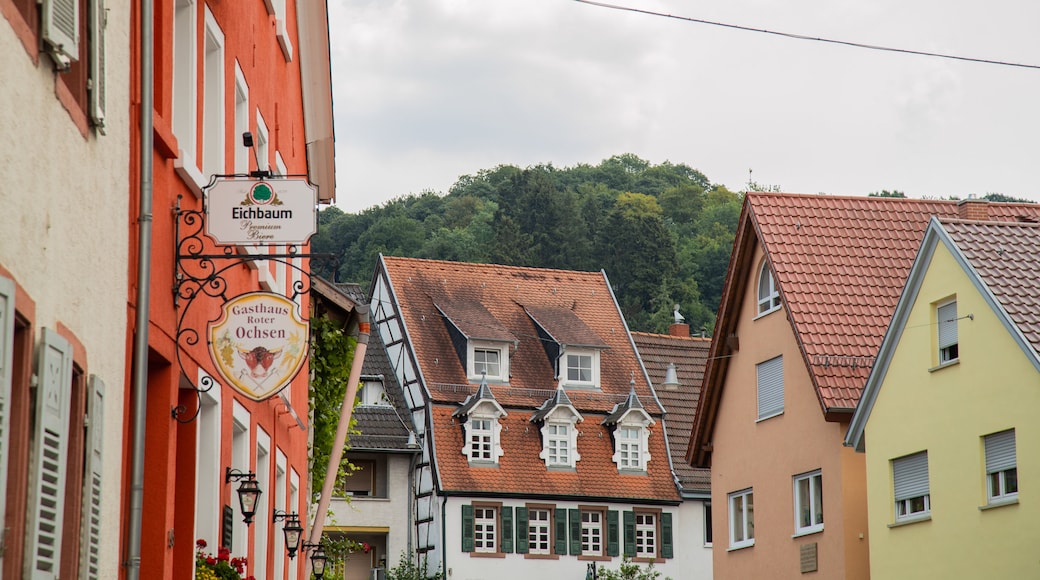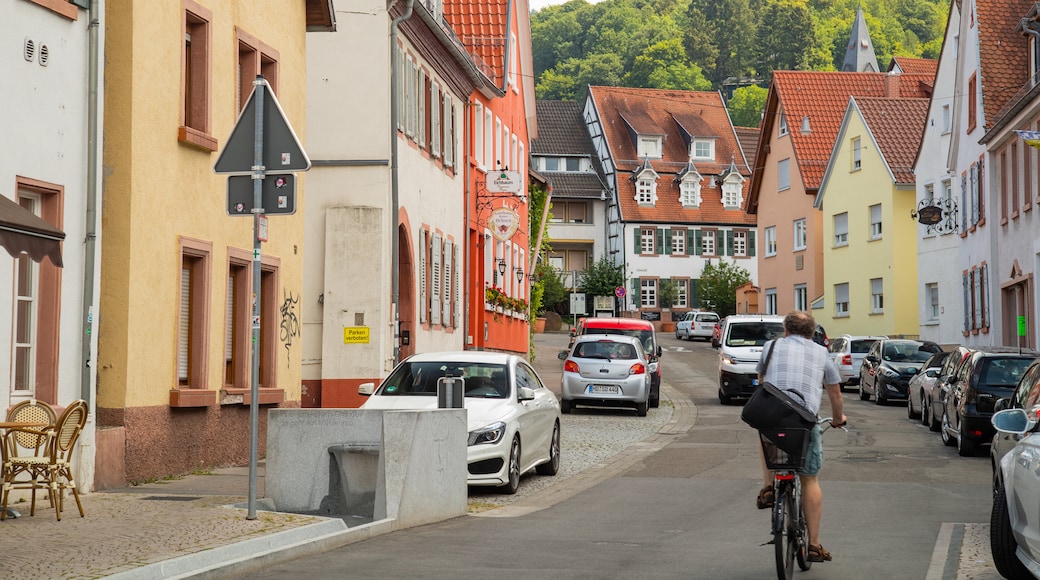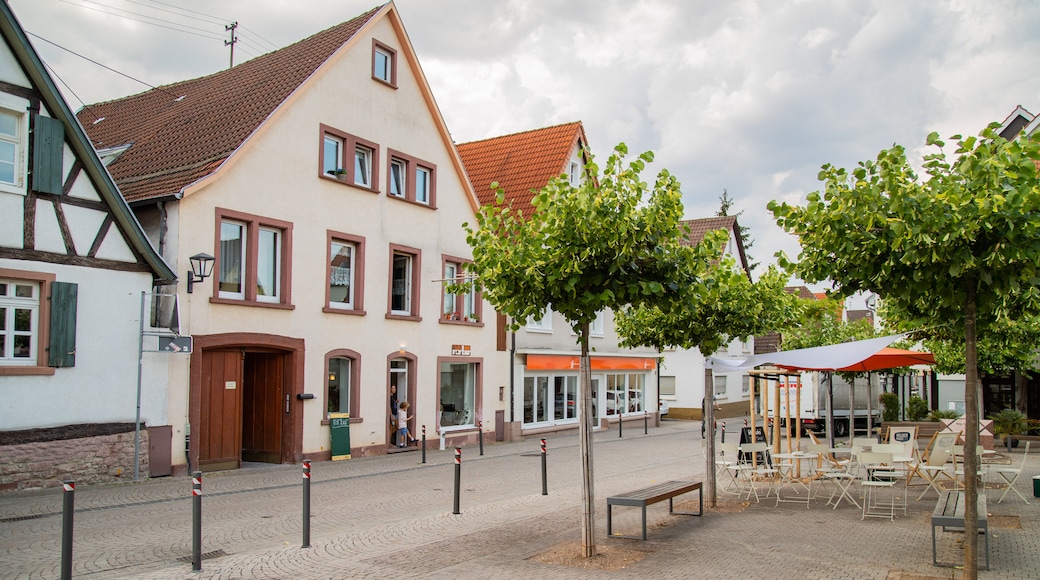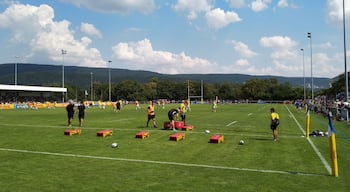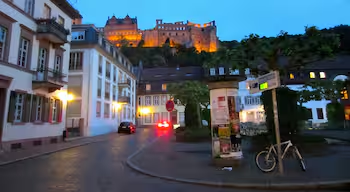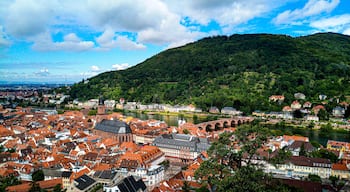Rohrbach is a district of Heidelberg that blends urban living with rural landscapes. First recorded in A.D. 766, traces of human settlement have been found here that date back to the Stone Age. Once a prosperous wine-producing village, it developed into an urbanized area after World War II. Today Rohrbach moves at a relaxed pace, has a varied culinary scene and gives easy access to the city’s pristine countryside.
Commercial and entertainment activities revolve around the streets of Karlsruher Straße and Rathausstraße. Find traditional German bakeries, wine bars and restaurants that serve cuisine inspired by African, Indian, Italian and Thai flavors. The Heimatmuseum is a museum of local history housed in the building of a former bakery. Learn about the area’s agriculture and wine industry in addition to the life of the Prussian poet Joseph von Eichendorff.
Notice the architecturally interesting buildings that line the streets in Rohrbach. Melanchthonkirche, for example, is a neo-Renaissance church first built in the 13th century. St. Johannes Parish Church has a tall octagonal-shaped bell tower and decorative stained-glass windows by German artist Emil Wachter. Admire the classical-style Rohrbacher Schlösschen, a former royal hunting lodge previously used as a military hospital.
After seeing some of the built environment enjoy Heidelberg’s natural beauty by following trails into the foothills of the 1,864-feet (568-meter) tall Königstuhl mountain. You can walk to the summit in under 2 hours, marvel at the views of the Neckar Valley and then catch the Heidelberger Bergbahn funicular back to the city center. The Steinbruch Leimen nature preserve blends vineyards with limestone quarries. Spot colorful wildflowers, bats, butterfly and eagle-owls.
Rohrbach is just 3 miles (5 kilometers) south of Heidelberg’s Old Town. Trams and buses stop at Rohrbach Markt. The hotels and guesthouses in the neighborhood provide alternative accommodations to those located in the city’s busy tourist districts.
